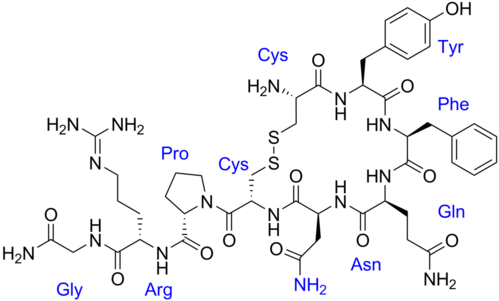Fascinating Proteins #Aquaporins
Fascinating Proteins #Aquaporins
The water pump of our cells.
Greetings Steemit, Time for another wonder of nature!

Introduction
I have something very interesting to present today, and i am sure you already know that all life needs water to stay alive. This is due to the simple fact that cells use water in many processes.

This is true for the cells in our body as well and it is really important that water can flow in and out of the cells in order to keep them healthy.
It is equally important that the brain can signal, that more water is needed in the organism, or in our case, the body. This will make us thirsty and force our body to drink, while our cells will take up more water.
Today we will look at how the cell's demand water and how water move in and out of cells.
Aquaporins is a category of channel molecules, making tunnels for water transport.
Prior to the knowledge of Aquaporins we thought that simple diffusion was enough to explain the water in and outputs of water over cell membranes.
Discovery

They called it CHIP, channel protein 28, thanks to it´s weight and this resulted in a Nobel prize during 2003´s ceremony, congratulations Peter Agre
The Aquaporin channels do not use ATP for energy, only Ion channels need energy. The Aquaporin channel only allow transport of uncharged particles via gradient pressure, making it highly effective with no stored energy. Water will move from high to low concentration, facilitated both by Aquaporins and diffusion!
Some cells must stay at a constant water level to be healthy, otherwise pH and Ion levels will be affected and make biological processes hard to carry out.
I decided to make a little simplified graphical summary of why we need water

The pressure of some cells are very important as well, especially for the red blood cells, which must be able to change volume, and thereby pressure at fast rate. The Aquaporins are amazingly fast, a single pore can move 1,000,000 H20 molecules per second, pewh!
Structure

The hydrophilic character come from the amino acids in the helices, they must have hydrophilic character as well, making them very sensitive to mutations. Changing one amino acid in the pore to a less hydrophilic will lead to problems, resulting in similar structures in many different cells types.
In the lower part, we can study two different Aquaporins, Aq1, permeable for water and Aq3 also permeable for glycerol and urea, other molecules that must get in and out of cells.
This is actually 4 sub units each having its own pore and a weight of 28 kilo Dalton, not like other ion channels which form one central pore.
Now we know how water can flow in and out of a cell but how does the cell tell our brain that it needs water?
Signaling for water
This is done via the hormonal system, which is responsible for most of the homeostatic functions such as keeping salt levels, pH and the body temperature constant. When the Posterior pituitary gland senses higher tonicity outside its cell membranes, meaning water levels have dropped, it will release a signal hormone to increase water uptake.

The particular hormone secreted to generate thirst in response as well as cellular water up take, is called vasopressin or called antidiuretic hormone ADH.
ADH induces cell signals that bring water into the cirkulation:
- Metabotropic receptor binds to ADH on the cell surface, signaling via the G-protein complex for more Aquaporines.
- Nephrons in the kidneys will be affected the most since Aquaporine 1 and 2 are most common here. Water uptake increases as absorption from e.g urine in collection tubes goes up, and we get more and more thirsty.
- Pressure sensors in the Aorta helps with keeping the blood volume on track, Porines are very important to blood cell function.
A related disease
Genetic mutations in the sequence of the pores often results in lowered permeability and leads to different diseases depending on which type of organ and Porine it affects. As i mentioned, the effectivity of the porines are very sensitive to mutations and Diabetes insipidus is a disease related to mutation in the gene coding for Apuaporine 2, a water specialized poirune like Aquapourine 1.
The disease can also be caused by lack of Vasopressin or damages in the hypothalamus & pituitary glands since this would damage the signaling for water uptake and secretion.
Diabetes insipidus is characterized by massive production urine, 10-20 L/day compared to the regular 1,5 L/day, this off course, leads to immense thirst, luckily it´s a rare condition.
Ever thought about drinking water?

No, just kidding..... or am I? :)
Thanks a lot for checking my post out, much appreciated

sorry I got lost in the steem. I just checked to see if you released your blog
Posting it now :) check it out!
Very Interesting read.
Thanks for putting in the time and research👍
Thanks for checking it out :)
this protein so important in all physiology process, awesome!!!
@OriginalWorks
The @OriginalWorks bot has determined this post by @clausewitz to be original material and upvoted it!
To call @OriginalWorks, simply reply to any post with @originalworks or !originalworks in your message!
Hi @clausewitz.
Nice post:)
Please add text references at the end of the post, I think this post might you understand why I suggest you add them:) : https://steemit.com/steemstem/@steemstem/being-a-member-of-the-steemstem-community
If you have any question please feel free to ask:)
I got references @all picutures that are not made by me, and i´ve not used text sorces for any text really, this is well within my knowledge!
Peter Ager is referenced as well.
Thanks for reading!
Maybe you would like to join our discord chat:
https://discord.gg/93dXBG5
I ll check in :)
Excellent article! I have a question, please.
Does this mean that there aren't a set number of Aquaporines in a cell membrane? Can the acquaporines change to allow more or less water to go through them or are more acquaporines created when the ADH content is higher in the blood?
That is true, this will signal for more Aquaporines in the membranes. It actually triggers the full transcription chain making it more abundantly expressed, and it goes surprisingly fast. ADH receptor blocking can even be used to treat low blood salt, by decreasing water uptake to the cirkulation via this mechanism.
If i remember correctly :)
Thanks for reading, much appreciated, and good question!
Congratulations! This post has been upvoted from the communal account, @minnowsupport, by Clausewitz from the Minnow Support Project. It's a witness project run by aggroed, ausbitbank, teamsteem, theprophet0, someguy123, neoxian, followbtcnews, and netuoso. The goal is to help Steemit grow by supporting Minnows. Please find us at the Peace, Abundance, and Liberty Network (PALnet) Discord Channel. It's a completely public and open space to all members of the Steemit community who voluntarily choose to be there.
If you would like to delegate to the Minnow Support Project you can do so by clicking on the following links: 50SP, 100SP, 250SP, 500SP, 1000SP, 5000SP.
Be sure to leave at least 50SP undelegated on your account.
GOOD INFORMATION
Thanks for checking it out :)
This post has received gratitude of 0.79 % from @appreciator thanks to: @clausewitz.